Following on from yesterday lunchtime’s blog I have received the following information from Forest Enterprise England. These are the letters sent by FEE’s Chief Executive to BASC and which were mentioned in the previous correspondence. they date from 2015 but they are nonetheless interesting.
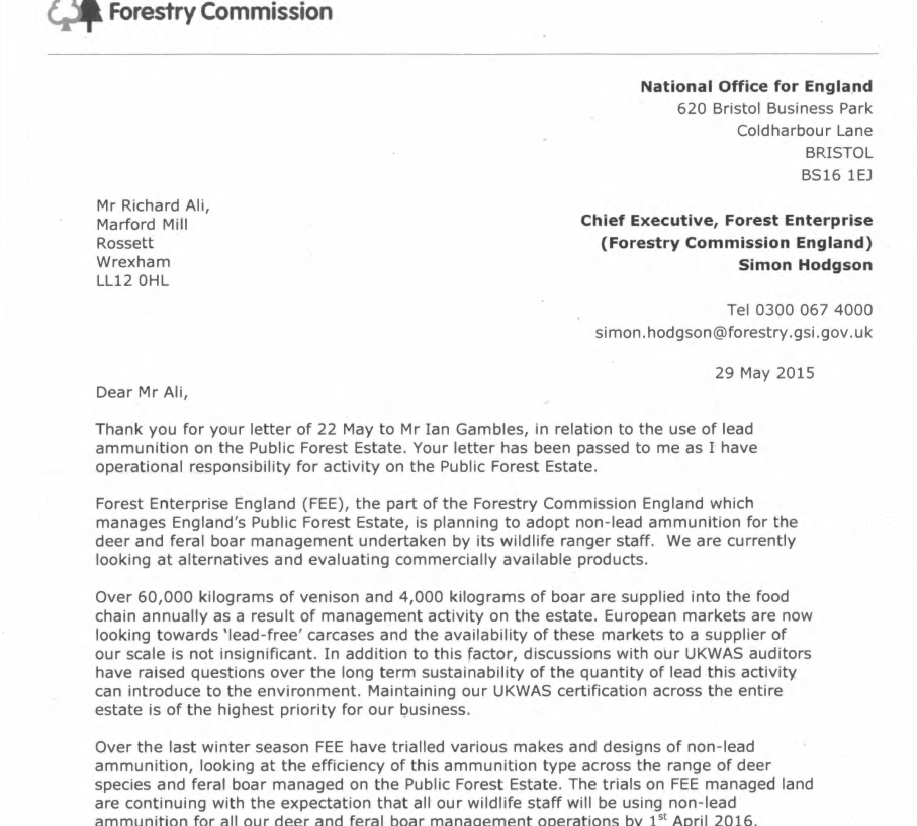
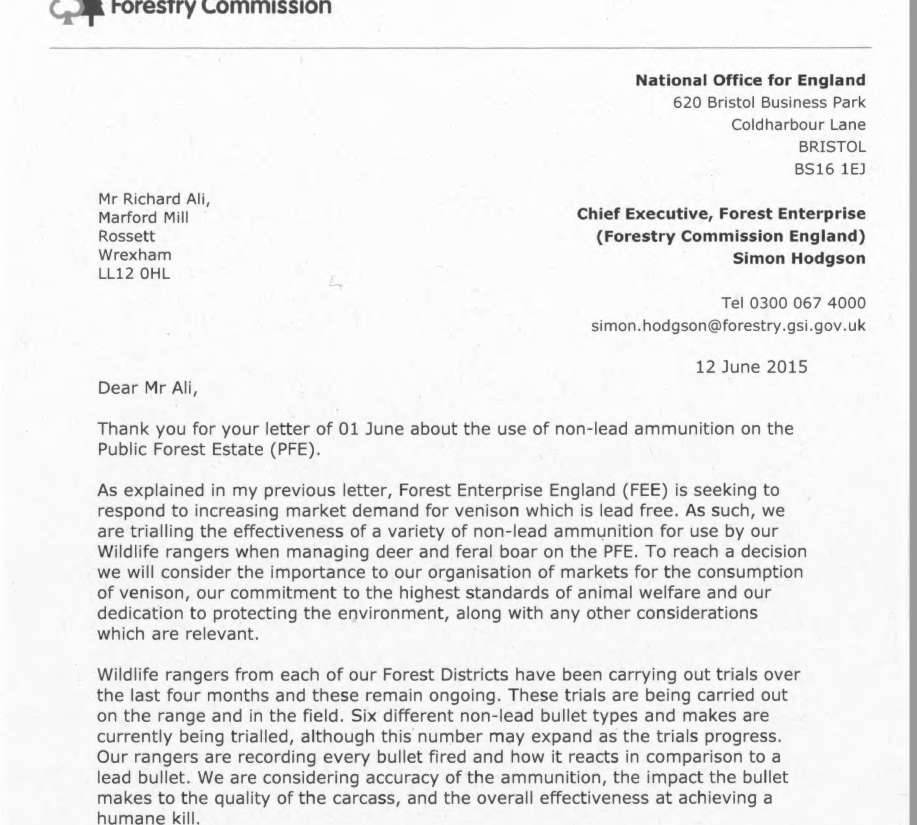
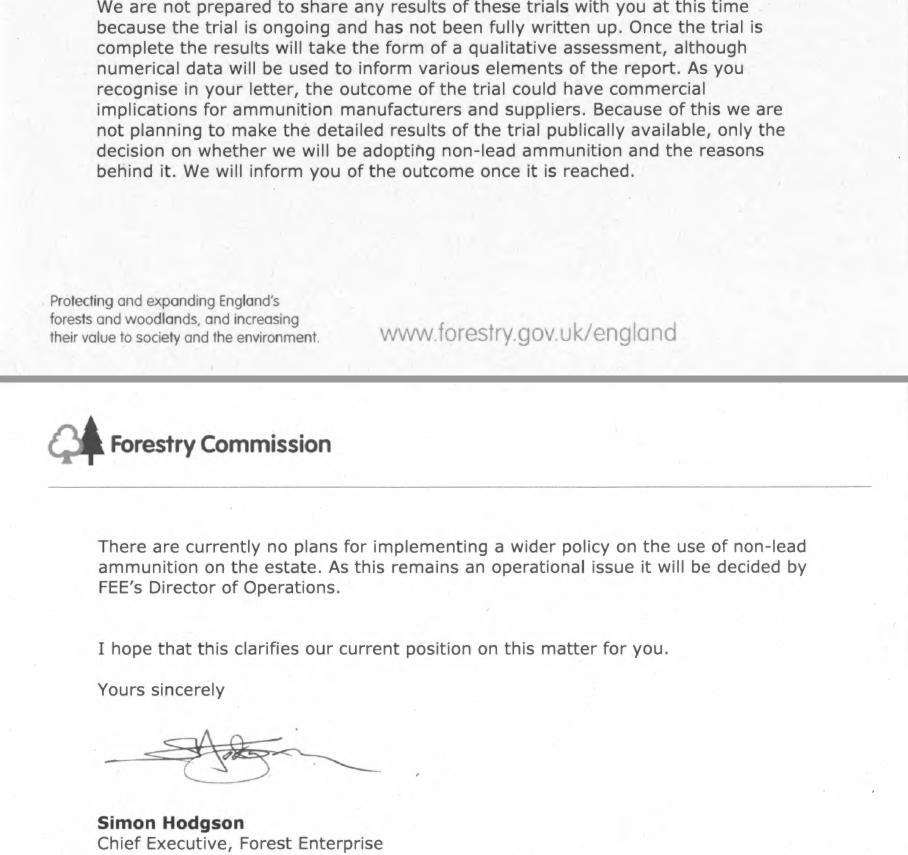
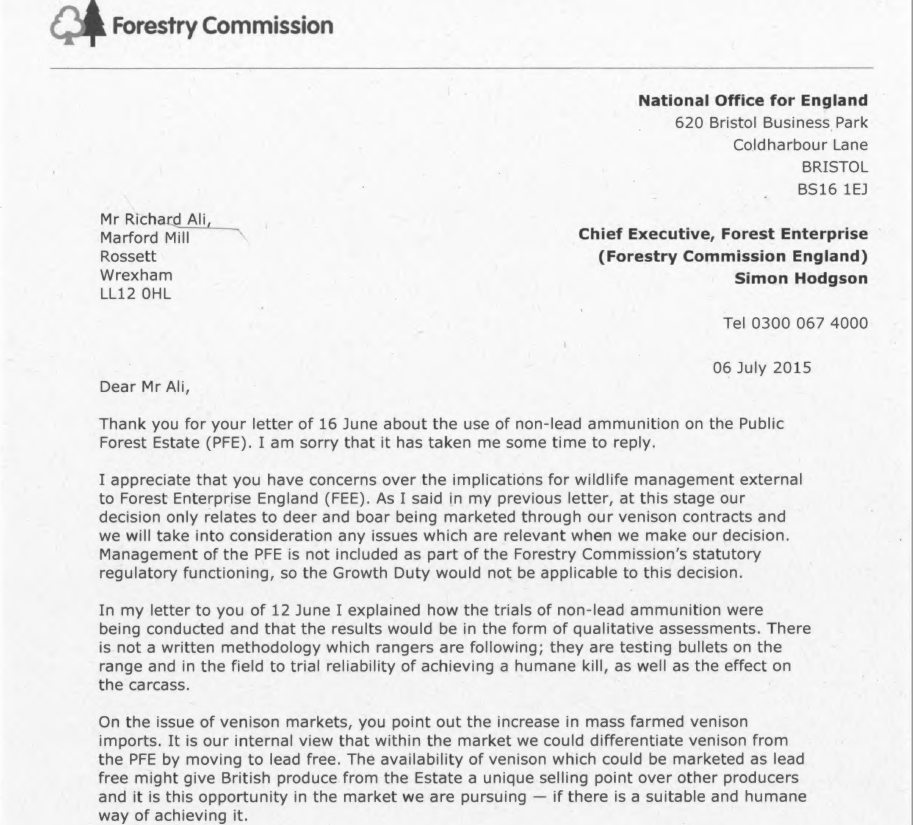
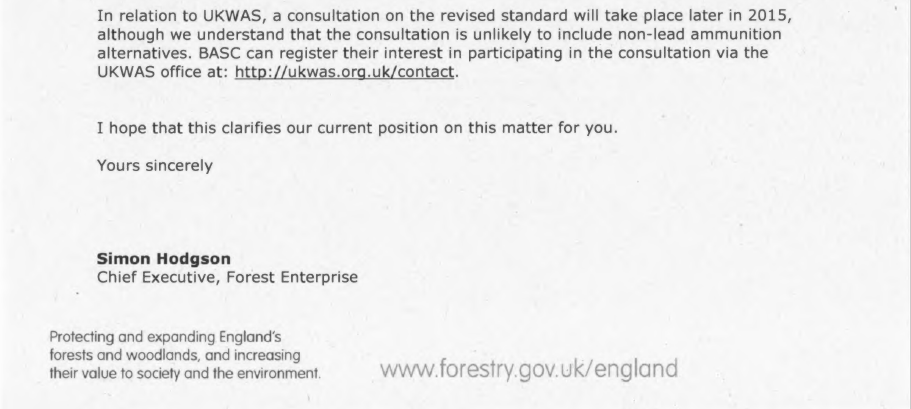
What do we learn from this?
We learn that BASC is quite a demanding stakeholder writing to FEE on 22 May 2015, 1 June 2015 and 16 June 2015. Amusingly, well I was amused, FEE replied to BASC after 5 working days, then after 9 working days and lastly after 14 working days. That’s a subtle, but not too subtle, way of pointing out that this correspondence is becoming slightly tiresome. But you can’t fault BASC on their urgency – they responded to FEE’s letters after 1 working day and after 4 working days (and on a Saturday too!). My, Richard Ali was an eager beaver, wasn’t he?
And I have been sent the note by the Chair of FEE, Harry Studholme, of his chat with Richard Ali on 7 December 2015 just ahead of the Westminster Hall debate on lead ammunition. That note doesn’t tell us very much but it is highly redacted so one wonders what are in the invisible bits of the note. Quite possibly nothing very interesting.
And I admire the straight bat with which FEE played.
BASC, to take the most charitable view possible, were doing a good job for their members in exploring the reasons for FEE’s obvious keenness to ditch toxic lead ammunition. To take a less charitable view, they were trying to trip up our public forestry department in their bizarre enthusiasm for continuing the use of toxic ammunition in killing animals whose meat passes into the human food chain. I wonder which it was? I’m not going to ask FEE (certainly not at the moment) but I wonder whether BASC would like to tell us what they were up to?
FEE seems to be one of the few organisations that is treating the issue of lead-contaminated meat for human consumption seriously. They could have been a bit quicker about it, when I was at RSPB we made the change to non-toxic ammunition in around 2009 (from memory – I’ll try to look it up and insert the right year here), but FEE are way ahead of the rest. And that’s because they know, as did the RSPB on a much, much smaller scale, that they were providing venison for the human food chain and could easily switch to non-toxic ammunition and remove any worries about the safety of that food. Because I was part of that change in RSPB, and because I felt that it was something that we should do (and the following years have only shown that to be all the more true), then I find it unacceptable for an industry which is based largely on killing birds for fun, but whose by-products (carcasses) go into the human food chain, to mount such a nasty and dogged campaign against the very simple switch to non-toxic ammunition.
Defra is the worst offender in this regard – that hopeless Liz Truss rejected the report of the Lead Ammunition Group when she could have done some good in the world – and Therese Coffey has not moved an inch either. It is shameful that a government department sits idly by and does not take the very simple measure, taken elsewhere in the world, and require shooters to use non-toxic ammunition. Defra is in thrall to shooters – that is the only explanation – and they ought to be ashamed of themselves. But we, the public, can be ashamed of them anyway.
Defra has been so utterly hopeless because it has listened to the rather rabid urgings of people with guns rather than looking at the science, and that’s why the industry deserves anything it gets on this issue. To require that shooters kill things that are eaten with non-toxic ammunition is not being anti-hunting, but to campaign so actively to keep toxic ammunition, wholly unnecessarily, in the human food chain is anti-people.
Shame on Defra, shame on the whole of the game-shooting industry (because I don’t know of any part of it which has broken ranks on this issue) and shame on the restaurants and chefs who haven’t led the way.
But three cheers for FEE which has acted properly and as a public body, serving the public, should.
[registration_form]
Almost exactly 30 years ago I led the introduction of carcass tagging – putting a non removable cattle type numbered tag on shot deer – in FC – and got exactly the same reaction from the shooting interests. And the reasons were similar to what Fe are doinbg today – Myself and senior colleagues had been shocked by the condition FC carcasses were arriving at the game dealers – and the dealers were equally unenthusiastic about paying for animals where much of the meat would go to waste. Tagging solved the problem instantly because every carcass could be traced to where it was shot and who shot it. The big estates were always banging on about poaching, but wouldn’t accept tagging as a solution – proved by a Roe deer found in Sussex when a car was topped at night. The deer was nicely tagged with an FC tag – but the police looked twice and found the tag had originally been put on a Red Deer near Inverness ! One case where the CPS decision was nice and easy.
Well done Mark I feel that puts it nicely in a nutshell and sums up the whole shooting match!
I note that FEE indicate no discernible difference using non lead bullets where they are evaluating various composition bullets, presumably they do so with an open mind.
As a youth I accompanied an East Anglian wildfowler amongst the creeks of an Essex salt marsh. His knowledge, craft and skill were outstanding and he would only shoot what he wanted for the pot – a couple of wigeon or teal and then we would continue seeing what was about and despite being presented with shootable wildfowl the gun had already been put away.
In later years he was almost exclusively a goose man, exercising restraint unless assured of a near certain kill. I was an impressionable young birder and I learnt a great deal and saw great sights as well as developing a respect for this form of shooting – in my mind it remains valid (as opposed to the killing for fun) .
Now in his seventies I recently asked him about non lead shot. As a wildfowler he declared that he had shot with nothing else over latter years and could not find any disadvantage in using it. I respect that opinion as my best yard stick with which to measure the game shooting fraternity reluctance to make the transition.
Very true. Whilst respecting that some people will find any form of shooting is unacceptable, there are still some shooters who have a wide knowledge and deep respect for the environment. However, there must be a line somewhere between these, more traditional hunters, and those who just periodically join in with live target shooting, for fun. I would not be surprised if some individuals on grouse shoots can even identify their quarry without it being pointed out to them. I can see nothing in the carnage that is driven grouse shooting that falls below that line. What is significant is that some more responsible shooters are now pointing towards that line themselves.
I am sure that i read somewhere that BASC rents shooting from FEE so it can run courses to help its members get their certificates. I wonder why they were arguing that they should be training people to lower standards?
I find it quite abhorrent that FEE refers to its gamekeepers as “wildlife rangers” in order to sanitize their perception. And it’s all very well to wish to ban lead ammunition, but what about the fallout radiation from Chernobyl which entered the food chain freely via deer while similarly contaminated sheep could not be declared fit for human consumption (I believe some herds are still unfit for market).
It all depends upon where the rain fell: uplands. The problem with Chernobyl was that unstable isotopes of caesium, iodine and strontium were released. The half-lives are: caesium 137 – 30 years, iodine 131 – 8 days, and strontium 90 – 29 years.
Iodine is short-lived, Strontium is absorbed in bones (so dangerous in milk and cheese), but in mostly sheep-grazing areas the isotope which received the greatest attention was caesium because it is long-lived, chemically reactive and highly soluble, making it easily absorbed into soft tissue.
Deer may absorb unstable caesium through lichens and mushrooms (uplands?), whereas bees, sheep and grouse absorb it through heather. In fact, the caesium pollution from Chernobyl got locked into a cycle of sheep eating contaminated heather, then excreting it in their faeces, which fertilised the soil, and then the heather would re-absorb it.
Deer do not like heather. It is upland honey and grouse which need to be avoided, rather than deer.
I read that restrictions on sheep movements were lifted in 2012. Recent papers indicate that the concern over unstable caesium was probably unnecessary, because higher doses of caesium 137 in other places have not lead to increases in any cancer. But other researchers remain cautious, because effects may yet emerge in later generations…
See http://www.bbc.co.uk/news/uk-wales-36134667